編輯:關於Android編程
這回我們是深入到ViewGroup內部\,了解ViewGroup的工作,同時會闡述更多有關於View的相關知識。以便為以後能靈活的使用自定義空間打更近一步的基礎。希望有志同道合的朋友一起來探討,深入Android內部,深入理解Android。
一、ViewGroup是什麼?
一個ViewGroup是一個可以包含子View的容器,是布局文件和View容器的基類。在這個類裡定義了ViewGroup.LayoutParams類,這個類是布局參數的子類。
其實ViewGroup也就是View的容器。通過ViewGroup.LayoutParams來指定子View的參數。
ViewGroup作為一個容器,為了制定這個容器應有的標准所以為其指定了接口
public abstract class ViewGroup extends View implements ViewParent, ViewManager
這兩個接口這裡不研究,如果涉及到的話會帶一下。ViewGroup有小4000行代碼,下面我們一個模塊一個模塊分析。
二、ViewGroup這個容器
ViewGroup是一個容器,其采用一個數組來存儲這些子View:
// Child views of this ViewGroup private View[] mChildren;
由於是通過一個數組來存儲View數據的,所以對於ViewGroup來說其必須實現增、刪、查的算法。下面我們就來看看其內部實現。
2.1 添加View的算法
protected boolean addViewInLayout(View child, int index, LayoutParams params) {
return addViewInLayout(child, index, params, false);
}
protected boolean addViewInLayout(View child, int index, LayoutParams params,
boolean preventRequestLayout) {
child.mParent = null;
addViewInner(child, index, params, preventRequestLayout);
child.mPrivateFlags = (child.mPrivateFlags & ~DIRTY_MASK) | DRAWN;
return true;
}
private void addViewInner(View child, int index, LayoutParams params,
boolean preventRequestLayout) {
...
addInArray(child, index);
...
}
private void addInArray(View child, int index) {
...
}
上面四個方法就是添加View的核心算法的封裝,它們是層層調用的關系。而我們通常調用的addView就是最終通過上面那個來最終達到添加到ViewGroup中的。
2.1.1 我們先來分析addViewInner方法:
首先是對子View是否已經包含到一個父容器中,主要的防止添加一個已經有父容器的View,因為添加一個擁有父容器的View時會碰到各種問題。比如記錄本身父容器算法的問題、本身被多個父容器包含時更新的處理等等一系列的問題都會出現。
if (child.getParent() != null) {
throw new IllegalStateException("The specified child already has a parent. " +
"You must call removeView() on the child's parent first.");
}
然後就是對子View布局參數的處理。
調用addInArray來添加View
父View為當前的ViewGroup
焦點的處理。
當前View的AttachInfo信息,這個信息是用來在窗口處理中用的。Android的窗口系統就是用過AttachInfo來判斷View的所屬窗口的,這個了解下就行。詳細信息設計到Android框架層的一些東西。
AttachInfo ai = mAttachInfo;
if (ai != null) {
boolean lastKeepOn = ai.mKeepScreenOn;
ai.mKeepScreenOn = false;
child.dispatchAttachedToWindow(mAttachInfo, (mViewFlags&VISIBILITY_MASK));
if (ai.mKeepScreenOn) {
needGlobalAttributesUpdate(true);
}
ai.mKeepScreenOn = lastKeepOn;
}
View樹改變的監聽
if (mOnHierarchyChangeListener != null) {
mOnHierarchyChangeListener.onChildViewAdded(this, child);
}
子View中的mViewFlags的設置:
if ((child.mViewFlags & DUPLICATE_PARENT_STATE) == DUPLICATE_PARENT_STATE) {
mGroupFlags |= FLAG_NOTIFY_CHILDREN_ON_DRAWABLE_STATE_CHANGE;
}
2.1.2 addInArray
這個裡面的實現主要是有個知識點,以前也沒用過arraycopy,這裡具體實現就不多加描述了。
System.arraycopy(children, 0, mChildren, 0, index); System.arraycopy(children, index, mChildren, index + 1, count - index);
2.2 移除View
移除View的幾種方式:
(1)移除指定的View。
(2)移除從指定位置的View
(3)移除從指定位置開始的多個View
(4)移除所有的View
其中具體涉及到的方法就有好多了,不過最終對要刪除的子View中所做的無非就是下列的事情:
如果擁有焦點則清楚焦點
將要刪除的View從當前的window中解除關系。
設置View樹改變的事件監聽,我們可以通過監聽OnHierarchyChangeListener事件來進行一些相應的處理。
從父容器的子容器數組中刪除。
具體的內容這裡就不一一貼出來了,大家回頭看看源碼就哦了。
2.3 查詢
這個就簡單了,就是直接從數組中取出就可以了:
public View getChildAt(int index) {
try {
return mChildren[index];
} catch (IndexOutOfBoundsException ex) {
return null;
}
}
分析到這兒,其實我們已經相當於分析了ViewGroup四分之一的代碼了,呵呵。
三、onFinishInflate
我們一般使用View的流程是在onCreate中使用setContentView來設置要顯示Layout文件或直接創建一個View,在當設置了ContentView之後系統會對這個View進行解析,然後回調當前視圖View中的onFinishInflate方法。只有解析了這個View我們才能在這個View容器中獲取到擁有Id的組件,同樣因為系統解析完View之後才會調用onFinishInflate方法,所以我們自定義組件時可以onFinishInflate方法中獲取指定子View的引用。
四、測量組件
在ViewGroup中提供了測量子組件的三個方法。
1、measureChild(View, int, int),為子組件添加Padding
protected void measureChild(View child, int parentWidthMeasureSpec,
int parentHeightMeasureSpec) {
final LayoutParams lp = child.getLayoutParams();
final int childWidthMeasureSpec = getChildMeasureSpec(parentWidthMeasureSpec,
mPaddingLeft + mPaddingRight, lp.width);
final int childHeightMeasureSpec = getChildMeasureSpec(parentHeightMeasureSpec,
mPaddingTop + mPaddingBottom, lp.height);
child.measure(childWidthMeasureSpec, childHeightMeasureSpec);
}
2、measureChildren(int, int)根據指定的高和寬來測量所有子View中顯示參數非GONE的組件。
protected void measureChildren(int widthMeasureSpec, int heightMeasureSpec) {
final int size = mChildrenCount;
final View[] children = mChildren;
for (int i = 0; i < size; ++i) {
final View child = children[i];
if ((child.mViewFlags & VISIBILITY_MASK) != GONE) {
measureChild(child, widthMeasureSpec, heightMeasureSpec);
}
}
}
3、measureChildWithMargins(View, int, int, int, int)測量指定的子組件,為子組件添加Padding和Margin。
protected void measureChildWithMargins(View child,
int parentWidthMeasureSpec, int widthUsed,
int parentHeightMeasureSpec, int heightUsed) {
final MarginLayoutParams lp = (MarginLayoutParams) child.getLayoutParams();
final int childWidthMeasureSpec = getChildMeasureSpec(parentWidthMeasureSpec,
mPaddingLeft + mPaddingRight + lp.leftMargin + lp.rightMargin
+ widthUsed, lp.width);
final int childHeightMeasureSpec = getChildMeasureSpec(parentHeightMeasureSpec,
mPaddingTop + mPaddingBottom + lp.topMargin + lp.bottomMargin
+ heightUsed, lp.height);
child.measure(childWidthMeasureSpec, childHeightMeasureSpec);
}
上面三個方法都是為子組件設置了布局參數。最終調用的方法是子組件的measure方法。在View中我們知道這個調用實際上就是設置了子組件的布局參數並且調用onMeasure方法,最終設置了View測量後的高度和寬度。
五、onLayout
這個函數是一個抽象函數,要求實現ViewGroup的函數必須實現這個函數,這也就是ViewGroup是一個抽象函數的原因。因為各種組件實現的布局方式不一樣,而onLayout是必須被重載的函數。
@Override
protected abstract void onLayout(boolean changed,
int l, int t, int r, int b);
來看View中layout方法:
public final void layout(int l, int t, int r, int b) {
boolean changed = setFrame(l, t, r, b);
if (changed || (mPrivateFlags & LAYOUT_REQUIRED) == LAYOUT_REQUIRED) {
if (ViewDebug.TRACE_HIERARCHY) {
ViewDebug.trace(this, ViewDebug.HierarchyTraceType.ON_LAYOUT);
}
onLayout(changed, l, t, r, b);
mPrivateFlags &= ~LAYOUT_REQUIRED;
}
mPrivateFlags &= ~FORCE_LAYOUT;
}
在這個方法中調用了setFrame方法,這個方法是用來設置View中的上下左右邊距用的
protected boolean setFrame(int left, int top, int right, int bottom) {
boolean changed = false;
//.......
if (mLeft != left || mRight != right || mTop != top || mBottom != bottom) {
changed = true;
// Remember our drawn bit
int drawn = mPrivateFlags & DRAWN;
// Invalidate our old position
invalidate();
int oldWidth = mRight - mLeft;
int oldHeight = mBottom - mTop;
mLeft = left;
mTop = top;
mRight = right;
mBottom = bottom;
mPrivateFlags |= HAS_BOUNDS;
int newWidth = right - left;
int newHeight = bottom - top;
if (newWidth != oldWidth || newHeight != oldHeight) {
onSizeChanged(newWidth, newHeight, oldWidth, oldHeight);
}
if ((mViewFlags & VISIBILITY_MASK) == VISIBLE) {
// If we are visible, force the DRAWN bit to on so that
// this invalidate will go through (at least to our parent).
// This is because someone may have invalidated this view
// before this call to setFrame came in, therby clearing
// the DRAWN bit.
mPrivateFlags |= DRAWN;
invalidate();
}
// Reset drawn bit to original value (invalidate turns it off)
mPrivateFlags |= drawn;
mBackgroundSizeChanged = true;
}
return changed;
}
我們可以看到如果新的高度和寬度改變之後會調用重新設置View的四個參數:
(1)protected int mLeft;
(2)protected int mRight;
(3)protected int mTop;
(4)protected int mBottom;
這四個參數指定了View將要布局的位置。而繪制的時候是通過這四個參數來繪制,所以我們在View中調用layout方法可以實現指定子View中布局。
六、ViewGroup的繪制。
ViewGroup的繪制實際上是調用的dispatchDraw,繪制時需要考慮動畫問題,而動畫的實現實際上就通過dispatchDraw來實現的。
我們不用理會太多的細節,直接看其繪制子組件調用的是drawChild方法,這個裡面具體的東西就多了,涉及到動畫效果的處理,如果有機會的話再寫,我們只要知道這個方法的功能就行。
這裡有個demo貼出其中的代碼大家可以測試下。
public ViewGroup01(Context context)
{
super(context);
Button mButton = new Button(context);
mButton.setText("測試");
addView(mButton);
}
@Override
protected void onLayout(boolean changed, int l, int t, int r, int b)
{
View v = getChildAt(0);
if(v != null)
{
v.layout(120, 120, 250, 250);
}
}
@Override
protected void dispatchDraw(Canvas canvas)
{
super.dispatchDraw(canvas);
View v = getChildAt(0);
if(v != null)
{
drawChild(canvas, v, getDrawingTime());
}
}
效果圖片:
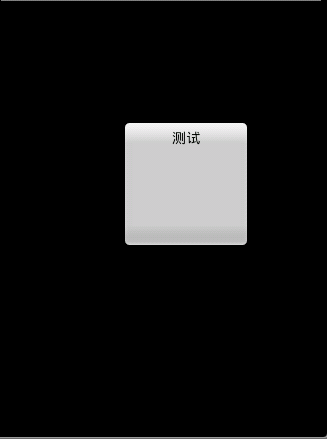
七、ViewGroup的事件分發機制
我們用手指去觸摸Android手機屏幕,就會產生一個觸摸事件,但是這個觸摸事件在底層是怎麼分發的呢?這個我還真不知道,這裡涉及到操作硬件(手機屏幕)方面的知識,也就是Linux內核方面的知識,我也沒有了解過這方面的東西,所以我們可能就往上層來分析分析,我們知道Android中負責與用戶交互,與用戶操作緊密相關的四大組件之一是Activity, 所以我們有理由相信Activity中存在分發事件的方法,這個方法就是dispatchTouchEvent(),我們先看其源碼吧
public boolean dispatchTouchEvent(MotionEvent ev) {
//如果是按下狀態就調用onUserInteraction()方法,onUserInteraction()方法
//是個空的方法, 我們直接跳過這裡看下面的實現
if (ev.getAction() == MotionEvent.ACTION_DOWN) {
onUserInteraction();
}
if (getWindow().superDispatchTouchEvent(ev)) {
return true;
}
//getWindow().superDispatchTouchEvent(ev)返回false,這個事件就交給Activity
//來處理, Activity的onTouchEvent()方法直接返回了false
return onTouchEvent(ev);
}
這個方法中我們還是比較關心getWindow()的superDispatchTouchEvent()方法,getWindow()返回當前Activity的頂層窗口Window對象,我們直接看Window API的superDispatchTouchEvent()方法
/** * Used by custom windows, such as Dialog, to pass the touch screen event * further down the view hierarchy. Application developers should * not need to implement or call this. * */ public abstract boolean superDispatchTouchEvent(MotionEvent event);
這個是個抽象方法,所以我們直接找到其子類來看看superDispatchTouchEvent()方法的具體邏輯實現,Window的唯一子類是PhoneWindow,我們就看看PhoneWindow的superDispatchTouchEvent()方法
public boolean superDispatchTouchEvent(KeyEvent event) {
return mDecor.superDispatcTouchEvent(event);
}
裡面直接調用DecorView類的superDispatchTouchEvent()方法,或許很多人不了解DecorView這個類,DecorView是PhoneWindow的一個final的內部類並且繼承FrameLayout的,也是Window界面的最頂層的View對象,這是什麼意思呢?別著急,我們接著往下看
我們先新建一個項目,取名AndroidTouchEvent,然後直接用模擬器運行項目, MainActivity的布局文件為
<RelativeLayout xmlns:android="http://schemas.android.com/apk/res/android"
xmlns:tools="http://schemas.android.com/tools"
android:layout_width="match_parent"
android:layout_height="match_parent"
tools:context=".MainActivity" >
<TextView
android:layout_width="wrap_content"
android:layout_height="wrap_content"
android:layout_centerHorizontal="true"
android:layout_centerVertical="true"
android:text="@string/hello_world" />
</RelativeLayout>
利用hierarchyviewer工具來查看下MainActivity的View的層次結構,如下圖

我們看到最頂層就是PhoneWindow$DecorView,接著DecorView下面有一個LinearLayout, LinearLayout下面有兩個FrameLayout
上面那個FrameLayout是用來顯示標題欄的,這個Demo中是一個TextView,當然我們還可以定制我們的標題欄,利用getWindow().setFeatureInt(Window.FEATURE_CUSTOM_TITLE,R.layout.XXX); xxx就是我們自定義標題欄的布局XML文件
下面的FrameLayout是用來裝載ContentView的,也就是我們在Activity中利用setContentView()方法設置的View,現在我們知道了,原來我們利用setContentView()設置Activity的View的外面還嵌套了這麼多的東西
我們來理清下思路,Activity的最頂層窗體是PhoneWindow,而PhoneWindow的最頂層View是DecorView,接下來我們就看DecorView類的superDispatchTouchEvent()方法
public boolean superDispatchTouchEvent(MotionEvent event) {
return super.dispatchTouchEvent(event);
}
在裡面調用了父類FrameLayout的dispatchTouchEvent()方法,而FrameLayout中並沒有dispatchTouchEvent()方法,所以我們直接看ViewGroup的dispatchTouchEvent()方法
/**
* {@inheritDoc}
*/
@Override
public boolean dispatchTouchEvent(MotionEvent ev) {
final int action = ev.getAction();
final float xf = ev.getX();
final float yf = ev.getY();
final float scrolledXFloat = xf + mScrollX;
final float scrolledYFloat = yf + mScrollY;
final Rect frame = mTempRect;
//這個值默認是false, 然後我們可以通過requestDisallowInterceptTouchEvent(boolean disallowIntercept)方法
//來改變disallowIntercept的值
boolean disallowIntercept = (mGroupFlags & FLAG_DISALLOW_INTERCEPT) != 0;
//這裡是ACTION_DOWN的處理邏輯
if (action == MotionEvent.ACTION_DOWN) {
//清除mMotionTarget, 每次ACTION_DOWN都很設置mMotionTarget為null
if (mMotionTarget != null) {
mMotionTarget = null;
}
//disallowIntercept默認是false, 就看ViewGroup的onInterceptTouchEvent()方法
if (disallowIntercept || !onInterceptTouchEvent(ev)) {
ev.setAction(MotionEvent.ACTION_DOWN);
final int scrolledXInt = (int) scrolledXFloat;
final int scrolledYInt = (int) scrolledYFloat;
final View[] children = mChildren;
final int count = mChildrenCount;
//遍歷其子View
for (int i = count - 1; i >= 0; i--) {
final View child = children[i];
//如果該子View是VISIBLE或者該子View正在執行動畫, 表示該View才
//可以接受到Touch事件
if ((child.mViewFlags & VISIBILITY_MASK) == VISIBLE
|| child.getAnimation() != null) {
//獲取子View的位置范圍
child.getHitRect(frame);
//如Touch到屏幕上的點在該子View上面
if (frame.contains(scrolledXInt, scrolledYInt)) {
// offset the event to the view's coordinate system
final float xc = scrolledXFloat - child.mLeft;
final float yc = scrolledYFloat - child.mTop;
ev.setLocation(xc, yc);
child.mPrivateFlags &= ~CANCEL_NEXT_UP_EVENT;
//調用該子View的dispatchTouchEvent()方法
if (child.dispatchTouchEvent(ev)) {
// 如果child.dispatchTouchEvent(ev)返回true表示
//該事件被消費了,設置mMotionTarget為該子View
mMotionTarget = child;
//直接返回true
return true;
}
// The event didn't get handled, try the next view.
// Don't reset the event's location, it's not
// necessary here.
}
}
}
}
}
//判斷是否為ACTION_UP或者ACTION_CANCEL
boolean isUpOrCancel = (action == MotionEvent.ACTION_UP) ||
(action == MotionEvent.ACTION_CANCEL);
if (isUpOrCancel) {
//如果是ACTION_UP或者ACTION_CANCEL, 將disallowIntercept設置為默認的false
//假如我們調用了requestDisallowInterceptTouchEvent()方法來設置disallowIntercept為true
//當我們抬起手指或者取消Touch事件的時候要將disallowIntercept重置為false
//所以說上面的disallowIntercept默認在我們每次ACTION_DOWN的時候都是false
mGroupFlags &= ~FLAG_DISALLOW_INTERCEPT;
}
// The event wasn't an ACTION_DOWN, dispatch it to our target if
// we have one.
final View target = mMotionTarget;
//mMotionTarget為null意味著沒有找到消費Touch事件的View, 所以我們需要調用ViewGroup父類的
//dispatchTouchEvent()方法,也就是View的dispatchTouchEvent()方法
if (target == null) {
// We don't have a target, this means we're handling the
// event as a regular view.
ev.setLocation(xf, yf);
if ((mPrivateFlags & CANCEL_NEXT_UP_EVENT) != 0) {
ev.setAction(MotionEvent.ACTION_CANCEL);
mPrivateFlags &= ~CANCEL_NEXT_UP_EVENT;
}
return super.dispatchTouchEvent(ev);
}
//這個if裡面的代碼ACTION_DOWN不會執行,只有ACTION_MOVE
//ACTION_UP才會走到這裡, 假如在ACTION_MOVE或者ACTION_UP攔截的
//Touch事件, 將ACTION_CANCEL派發給target,然後直接返回true
//表示消費了此Touch事件
if (!disallowIntercept && onInterceptTouchEvent(ev)) {
final float xc = scrolledXFloat - (float) target.mLeft;
final float yc = scrolledYFloat - (float) target.mTop;
mPrivateFlags &= ~CANCEL_NEXT_UP_EVENT;
ev.setAction(MotionEvent.ACTION_CANCEL);
ev.setLocation(xc, yc);
if (!target.dispatchTouchEvent(ev)) {
}
// clear the target
mMotionTarget = null;
// Don't dispatch this event to our own view, because we already
// saw it when intercepting; we just want to give the following
// event to the normal onTouchEvent().
return true;
}
if (isUpOrCancel) {
mMotionTarget = null;
}
// finally offset the event to the target's coordinate system and
// dispatch the event.
final float xc = scrolledXFloat - (float) target.mLeft;
final float yc = scrolledYFloat - (float) target.mTop;
ev.setLocation(xc, yc);
if ((target.mPrivateFlags & CANCEL_NEXT_UP_EVENT) != 0) {
ev.setAction(MotionEvent.ACTION_CANCEL);
target.mPrivateFlags &= ~CANCEL_NEXT_UP_EVENT;
mMotionTarget = null;
}
//如果沒有攔截ACTION_MOVE, ACTION_DOWN的話,直接將Touch事件派發給target
return target.dispatchTouchEvent(ev);
}
這個方法相對來說還是蠻長,不過所有的邏輯都寫在一起,看起來比較方便,接下來我們就具體來分析一下
我們點擊屏幕上面的TextView來看看Touch是如何分發的,先看看ACTION_DOWN
在DecorView這一層會直接調用ViewGroup的dispatchTouchEvent(), 先看18行,每次ACTION_DOWN都會將mMotionTarget設置為null, mMotionTarget是什麼?我們先不管,繼續看代碼,走到25行, disallowIntercept默認為false,我們再看ViewGroup的onInterceptTouchEvent()方法
public boolean onInterceptTouchEvent(MotionEvent ev) {
return false;
}
直接返回false, 繼續往下看,循環遍歷DecorView裡面的Child,從上面的MainActivity的層次結構圖我們可以看出,DecorView裡面只有一個Child那就是LinearLayout, 第43行判斷Touch的位置在不在LinnearLayout上面,這是毫無疑問的,所以直接跳到51行, 調用LinearLayout的dispatchTouchEvent()方法,LinearLayout也沒有dispatchTouchEvent()這個方法,所以也是調用ViewGroup的dispatchTouchEvent()方法,所以這個方法卡在51行沒有繼續下去,而是去先執行LinearLayout的dispatchTouchEvent()
LinearLayout調用dispatchTouchEvent()的邏輯跟DecorView是一樣的,所以也是遍歷LinearLayout的兩個FrameLayout,判斷Touch的是哪個FrameLayout,很明顯是下面那個,調用下面那個FrameLayout的dispatchTouchEvent(), 所以LinearLayout的dispatchTouchEvent()卡在51也沒繼續下去
繼續調用FrameLayout的dispatchTouchEvent()方法,和上面一樣的邏輯,下面的FrameLayout也只有一個Child,就是RelativeLayout,FrameLayout的dispatchTouchEvent()繼續卡在51行,先執行RelativeLayout的dispatchTouchEvent()方法
執行RelativeLayout的dispatchTouchEvent()方法邏輯還是一樣的,循環遍歷 RelativeLayout裡面的孩子,裡面只有一個TextView, 所以這裡就調用TextView的dispatchTouchEvent(), TextView並沒有dispatchTouchEvent()這個方法,於是找TextView的父類View,在看View的dispatchTouchEvent()的方法之前,我們先理清下上面這些ViewGroup執行dispatchTouchEvent()的思路,我畫了一張圖幫大家理清下(這裡沒有畫出onInterceptTouchEvent()方法)
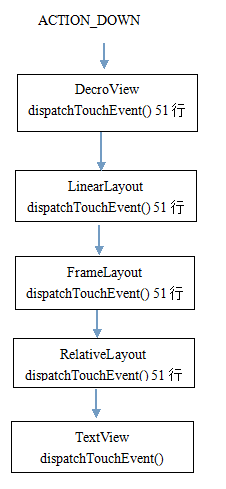
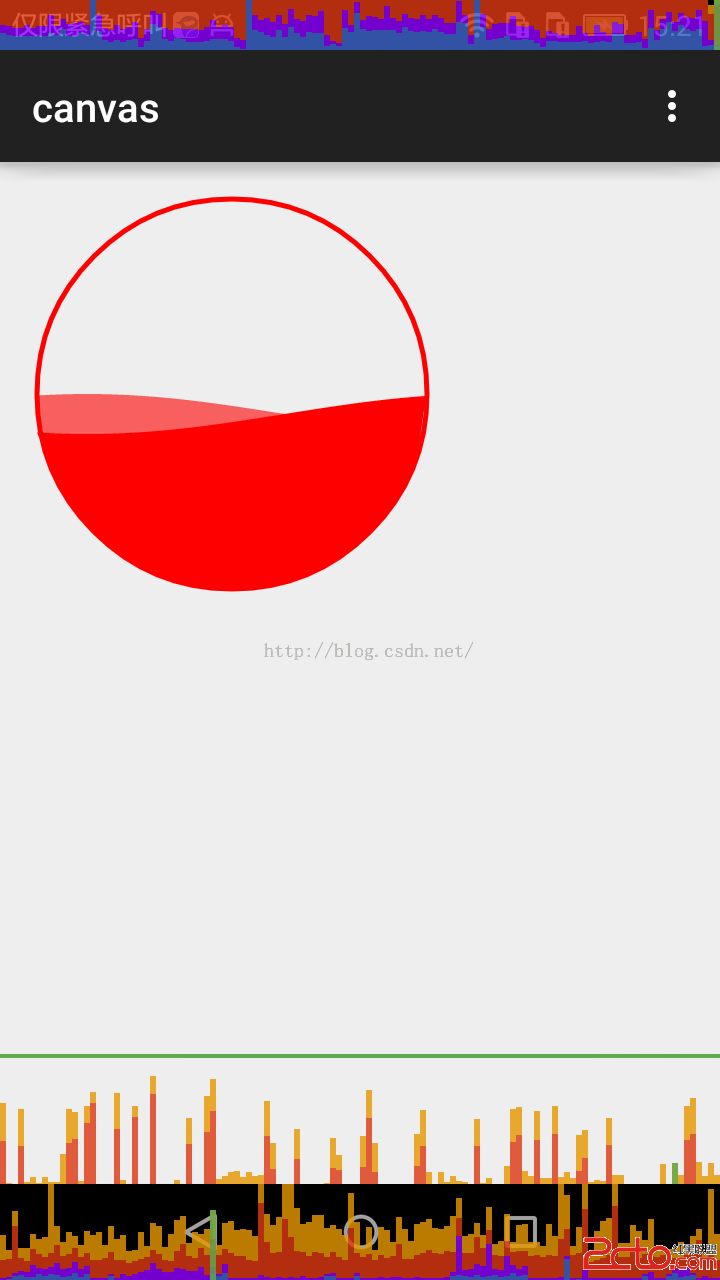 Android繪制波浪曲線,效果很贊的。
Android繪制波浪曲線,效果很贊的。
package neal.canvas;import android.content.Context;import android.graphics.Canv
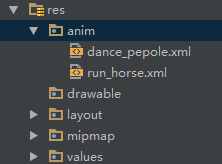 Android動畫解析(一)—— Frame Animation(幀動畫)
Android動畫解析(一)—— Frame Animation(幀動畫)
動畫在我們實際開發中占有很重要的地位,一個優秀的動畫能為我們的app應用增色很多,同時一個優秀的動畫銜接能夠增加我們app的邏輯展示。在Android系統中,系統給我們
 Android之——常用手機號碼功能
Android之——常用手機號碼功能
有些Android手機中會帶有一些常用號碼的功能,比如訂餐電話、公共電話、航空機票,等等諸如此類的服務,點擊相應的號碼會自動彈出撥打電話的界面。那下面我們就一起來實現一個
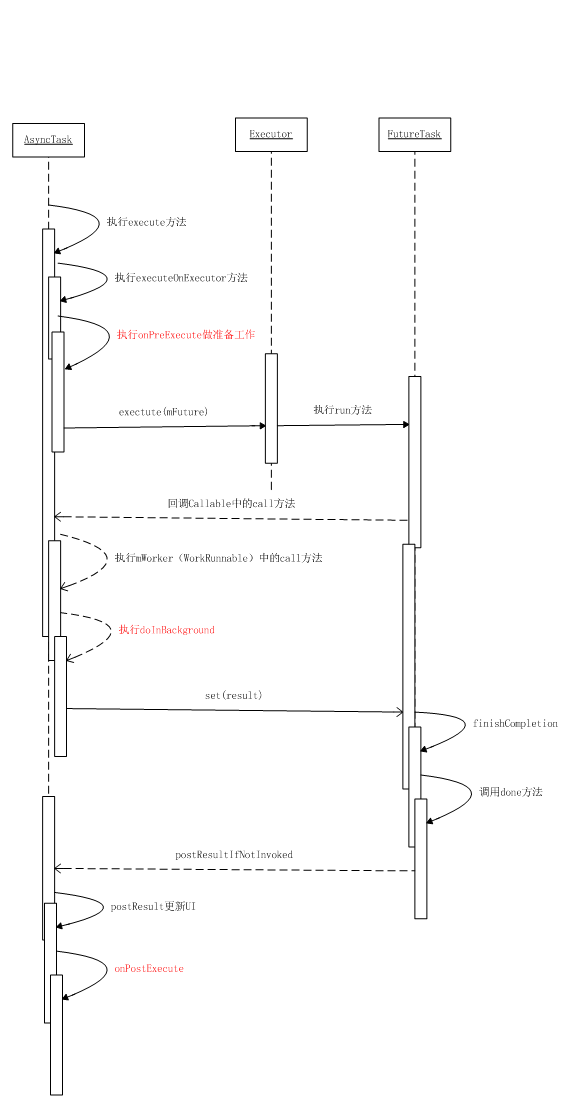 深入分析AsyncTask
深入分析AsyncTask
1. 什麼是AsyncTaskAsyncTask 即 asynchronous task,異步任務。AsyncTask實際上是圍繞Thread和Handler設計的一個輔